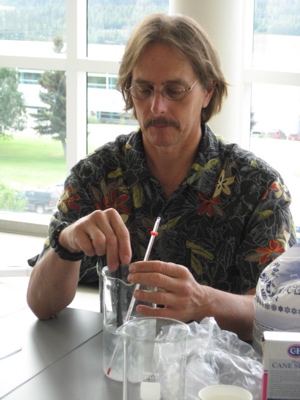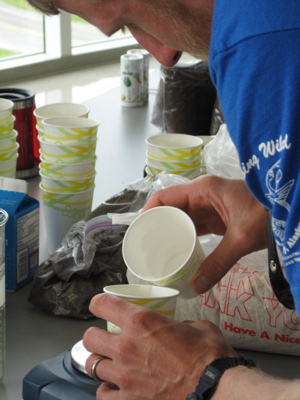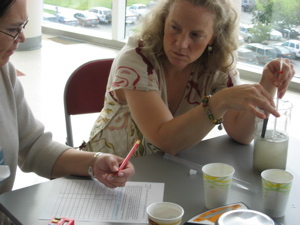Freezers
From Step 2007 Wiki
(Difference between revisions)
| (10 intermediate revisions not shown) | |||
| Line 1: | Line 1: | ||
| - | |||
| - | Our group focused on the concept of energy transfer by examining how the freezing/melting point of ice/water can be depressed by different materials. | + | Our group focused on the concept of energy transfer by examining how the freezing/melting point of ice/water can be depressed by different materials. |
| + | [[Image:SecA3.jpg]] | ||
| + | We measured the temperature of ice water, then added 17.5g of different substances as variables. We then recorded the change in temperature of the water with the variables at 30-second intervals for five minutes. | ||
| + | [[Image:SecA5.jpg]] | ||
| + | It is our hope, that by having students model this phenomenon, they will be able to more fully appreciate how and why energy transfers between sea ice and Alaska's coast.[[Image:SecA2.jpg]] | ||
| - | + | This activity can be expanded by having students design a way to keep fish fresh a little longer.[[Image:SecA6.jpg]] | |
| - | + | ||
| - | + | ||
Current revision as of 22:28, 20 July 2007
Our group focused on the concept of energy transfer by examining how the freezing/melting point of ice/water can be depressed by different materials.
 We measured the temperature of ice water, then added 17.5g of different substances as variables. We then recorded the change in temperature of the water with the variables at 30-second intervals for five minutes.
We measured the temperature of ice water, then added 17.5g of different substances as variables. We then recorded the change in temperature of the water with the variables at 30-second intervals for five minutes.
It is our hope, that by having students model this phenomenon, they will be able to more fully appreciate how and why energy transfers between sea ice and Alaska's coast.
This activity can be expanded by having students design a way to keep fish fresh a little longer.

